In a major victory for public access to Chugach State Park, the conservation nonprofit Great Land Trust (GLT) purchased two parcels at the end of the Stewart Trail, in Upper Potter Valley, and turned them over to the state to provide permanent public park access. According to an August 20 GLT press release, the purchase, which was largely funded by an anonymous donor, was finalized on August 14. The land was immediately transferred to Alaska Division of Parks and Recreation.
The two parcels purchased by GLT were formerly owned by the Alaska Zoo and Alaska Botanical Garden, and are located at a critical strategic junction between the Stewart Trail and Chugach State Park. It is unclear whether the Stewart Trail continues into the parcels themselves, dead-ends near their edge, or continues de-facto via a spur or spurs.
Neither the Zoo nor the Botanical Garden had impeded public use of the parcels, both of which are criss-crossed with trails. Nevertheless, the purchase of the lots means that they cannot fall into the hands of a new owner hostile to public access. With the parcels secured, trail users now have a legally-confirmed public route between Steamboat Drive and Chugach State Park.
In an August 22 email, GLT told the Landmine that trail users should not expect any near-term changes to the parcels. GLT said that deed restrictions require the land to be managed as part of Chugach State Park, and that future management decisions would be made by State Parks.

GLT’s purchase is the latest move in a bitter long-running war over public access to Upper Potter Valley via the Stewart Trail. The purchase follows a years-long attempt by a local landowner to gate and seize control of the trail, and a more recent attempt by a developer to close the trail and pursue the construction of a quixotic Bavarian village and private trailhead.
Frank Pugh’s wall
In 2012, Frank and Oksana Pugh purchased the westernmost plot traversed by the Stewart Trail. In 2015, Frank Pugh expanded an existing vehicle gate with metal and barbed wire and began confronting trail users who circumvented it, claiming that he owned the trail. Negotiations with GLT and the municipality, both of which had scant incentive to pay or make concessions to restore public access to what they already believed to be a public trail, failed.
A community group called Friends of the Stewart Trail (FOST) formed in 2016 and successfully sued Pugh and a co-defendant who owned a neighboring parcel, ultimately winning full restoration of public pedestrian access in February 2023.
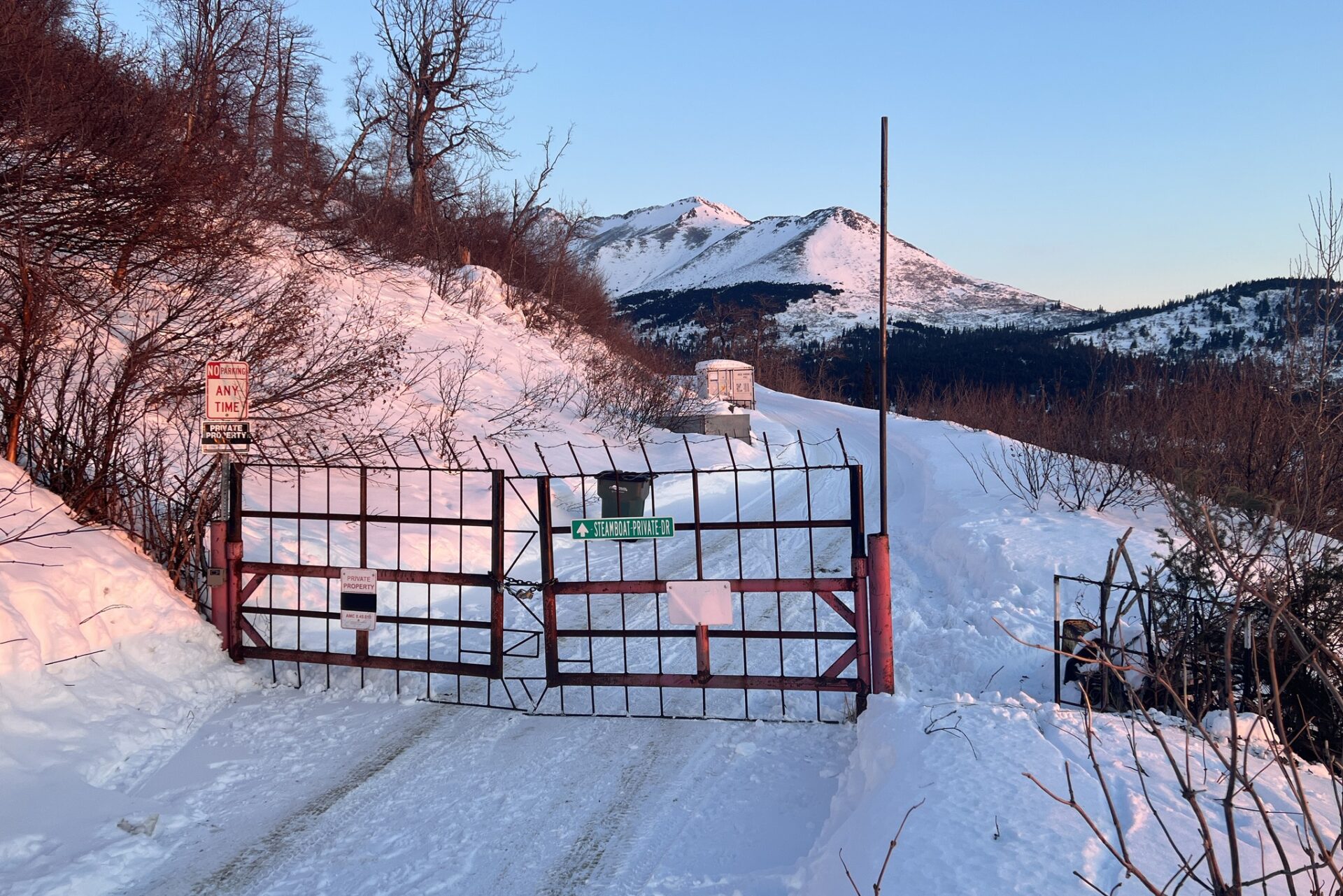
But despite the conclusion of FOST’s legal battle against Pugh, the war over access to the Stewart Trail was not over.
Bavaria on the Hillside
In a strange refrain of the multi-year Pugh saga, yet another landowner chasing development dreams in Upper Potter Valley attempted to block public use of the Stewart Trail. In 2023, after the conclusion of the FOST lawsuit, local developer and onetime State House candidate Brandy Pennington purchased two large plots bisected by the trail. According to a development proposal obtained by the Landmine via the Rabbit Creek Community Council (RCCC), Pennington’s plans for the valley included over a hundred housing units, a spa, a downhill ski area and snowboard terrain park, “snowmobile excursions,” and “Bavarian-themed” streets bustling with nightlife.
“Imagine a community where the rustic charm of Leavenworth, WA meets the upscale allure of Vail, CO, all while capturing the essence of Girdwood, Alaska,” the proposal stated.
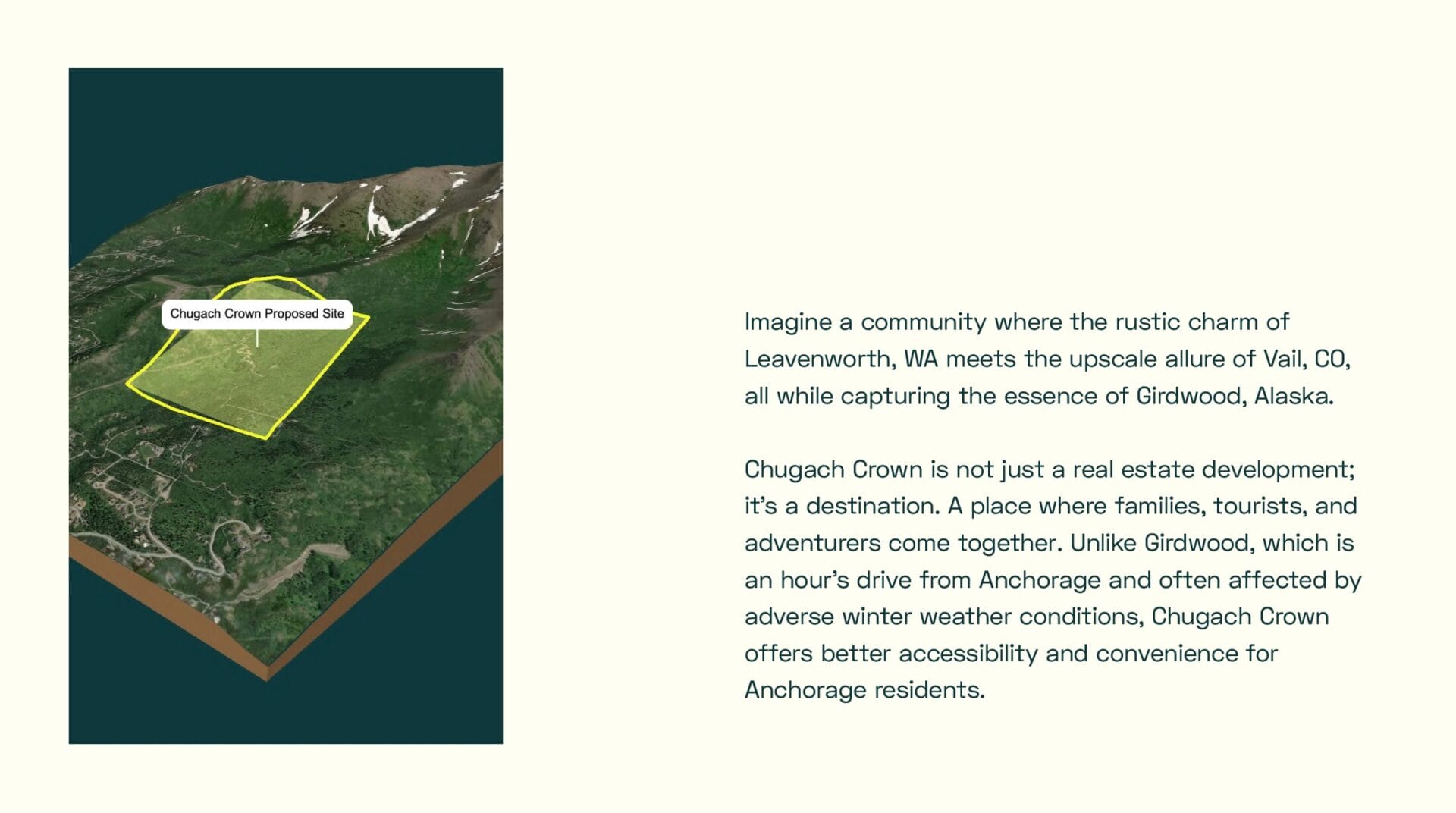
Some time last summer, numerous trail cameras and signs were installed along the Stewart Trail where it crosses Pennington’s property. The signs claimed that there was “no legal public access,” claimed that the Stewart Trail easement ended at Pennington’s property line, threatened trail users with litigation, and ordered users to turn around.
Unlike Pugh and his co-defendent, the prior owner of Pennington’s parcels had not attempted to block access to the Stewart Trail and therefore had not been included in the FOST lawsuit. Reached via text, Pennington claimed that this meant that the easement did not cross her property and that she had the right to block use of the trail, which she referred to as her “driveway.”
Pennington claimed that the exact location of the trail was undefined, repeatedly asking the Landmine to tell her “where the trail is.” She also stated that she had had negative encounters with trail users, and warned of liability arising from dangerous area moose.
Pennington claimed that it had only “come to [her] attention” that signage had been installed on her property, but later stated she and another party or parties (“we”) had installed the cameras.
When informed that the Landmine would be publishing photos of the signage and cameras on social media, Pennington responded “wicked absolutely wicked” and repeatedly threatened litigation. The Landmine, which has been covering the Stewart Trail controversy since 2019, posted the photos.

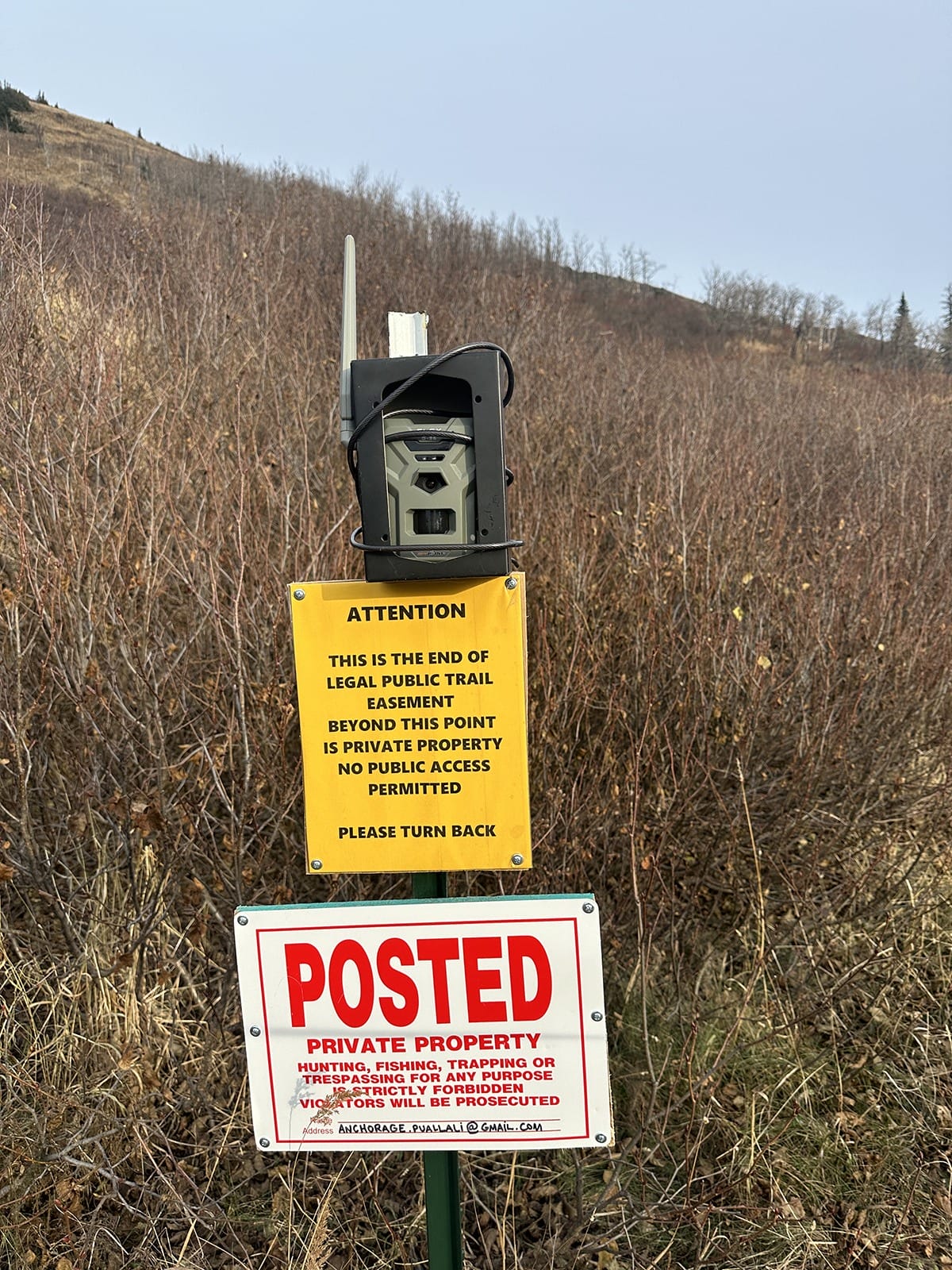
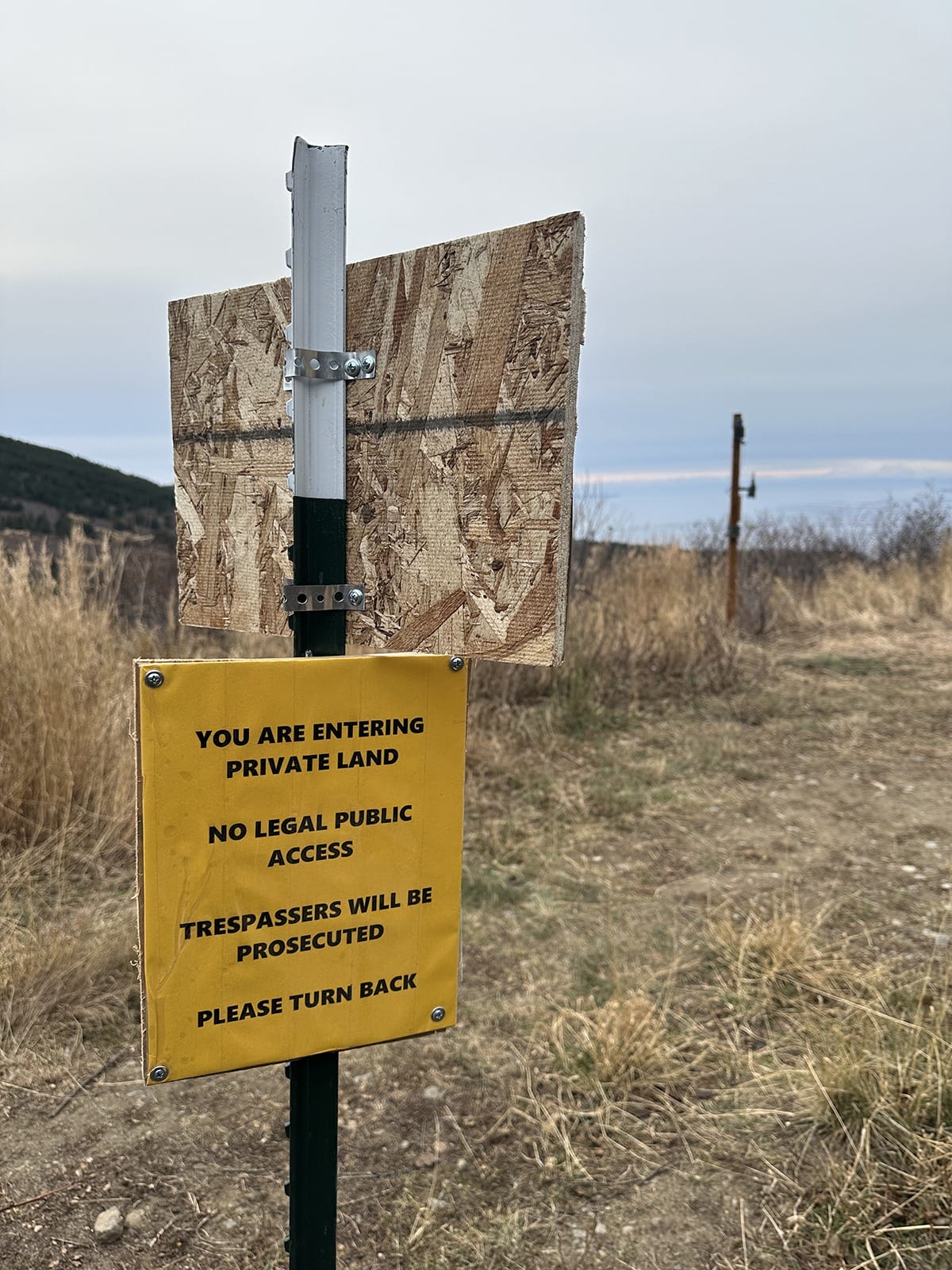
On November 13, Pennington published a public video response to the Landmine’s coverage. Set to a backdrop of swelling cinematic music, Pennington described the Stewart Trail as a “private driveway” and claimed that the city had rebuffed her offer to develop a 500-car parking lot and other amenities on her property. The “no trespassing” signs, she said, were now intended to protect the privacy of those living nearby.
In response to questions about the situation, the mayor’s office told the Landmine in a December 18, 2024 email that the municipality had met with both Pennington and FOST and was hoping to find a “mutually agreeable path forward.”
“Supported by the Rabbit Creek Community Council”
In January 2025, Pennington submitted an application to the Municipality’s Heritage Land Bank (HLB) to authorize a land disposal that could allow her to take control of a 120-acre tract of public land immediately south of her parcels. If successful, Pennington would gain private ownership of a massive continuous band of real estate stretching across Upper Potter Valley, from the west ridge of McHugh Peak to the south ridge.
Pennington’s application stated that she intended to use the HLB tract for open space, trails, a community center, and a Chugach State Park trailhead. If Pennington succeeded in both obtaining the HLB tract and blocking the Stewart Trail, her proposed privately-owned trailhead – the first of its kind in the Anchorage area – would become the only feasible access point to Upper Potter Valley and a wide swath of Chugach State Park.
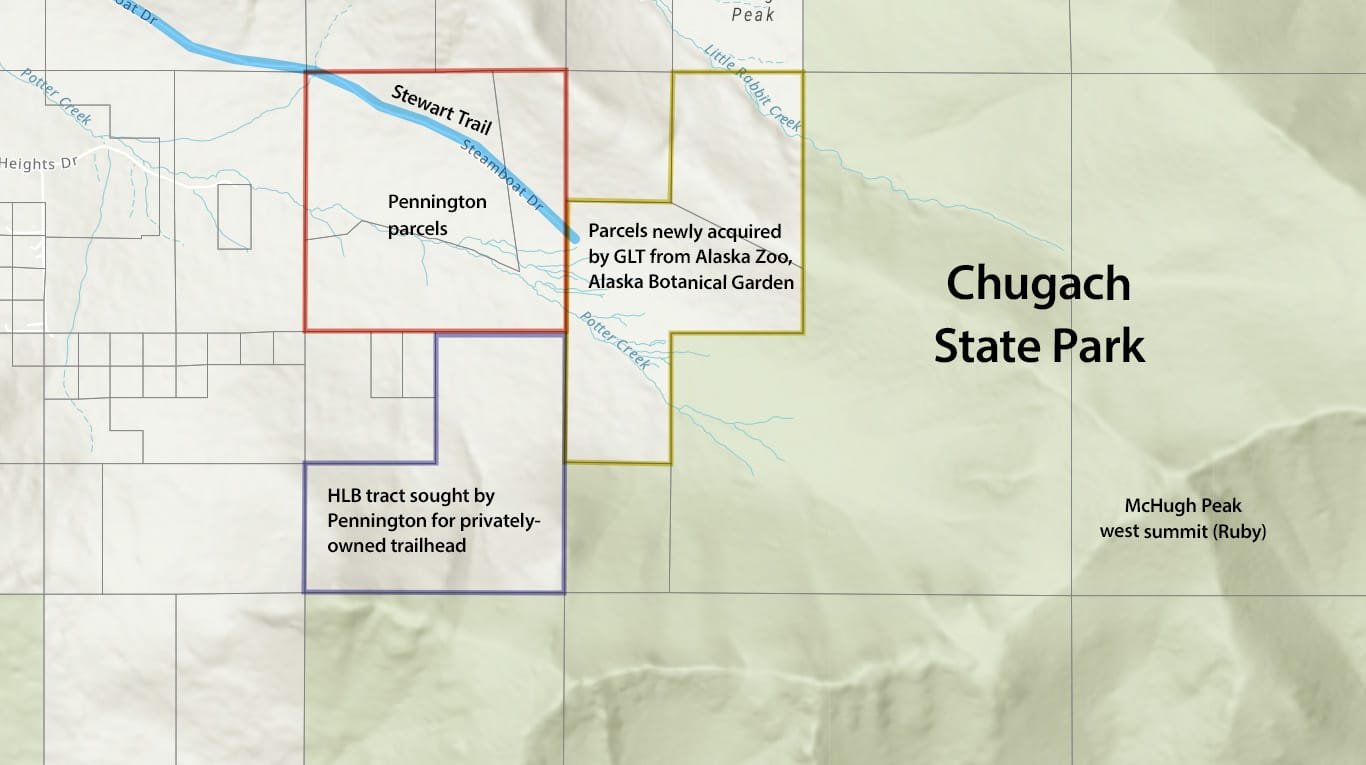
Pennington repeatedly told the HLB that her proposal was “supported by the Rabbit Creek Community Council,” of which she was a member.
 Screenshot from Pennington’s HLB application
Screenshot from Pennington’s HLB application
But a January 24 resolution from the RCCC stated that on January 9, the council had in fact voted 22 to 1 to oppose Pennington’s application. In a prominent italicized section on the first page of the resolution, the RCCC directly addressed Pennington’s claims of RCCC support:
Contrary to the statements in the Application, RCCC has not previously supported this proposed sale and commercial trailhead. Neither has RCCC taken a position on other developments loosely proposed by the Applicant in Potter Valley, as claimed by the Applicant. RCCC has asked repeated questions about access, infrastructure, risk management, and impacts to the watershed and surrounding lands that remain unanswered.
The RCCC resolution added that Pennington’s proposed development would violate adopted land use plans and threaten wildlife, groundwater, recreation, and public access. The resolution cited Pennington’s attempt to block the Stewart Trail, and her “current antagonistic attitude toward public access.”
The RCCC made another critical observation: that unlike the plots directly involved in the FOST lawsuit, a recorded public easement already existed across the portion of the Stewart Trail crossing Pennington’s property. Former landowners, perhaps hoping to spur development, had recorded the 20-foot public easement in 1988.

In an August 20 email, the HLB told the Landmine that they had declined to authorize the land disposal requested by Pennington. HLB cited “a strong preference for retaining the parcel until it can be considered for a potential land exchange with the State of Alaska to enhance public access to Chugach State Park.”
By early June most of Pennington’s threatening signs had been removed, though at least one sign reading “NO LEGAL PUBLIC ACCESS” remained.
“It’s absolutely stunning”
On August 19, local photographer Carl Johnson posted photos of the Stewart Trail and Upper Potter Valley to Facebook, along with a caption describing his involvement with public access issues there. The post quickly racked up hundreds of “likes” and “loves” on the social media site.
“You never know where life is going to take you,” the post began, “or how long the path may be. In September of 2009, I took a hike on the Stewart Homestead Trail in Anchorage to photograph some land for the Great Land Trust. Their goal was to purchase land that would connect that historically-used trail with Chugach State Park, adding a new access point to that park.”
Now, sixteen years later, the post said, he was proud to play a role — however small — in restoring access to the trail.
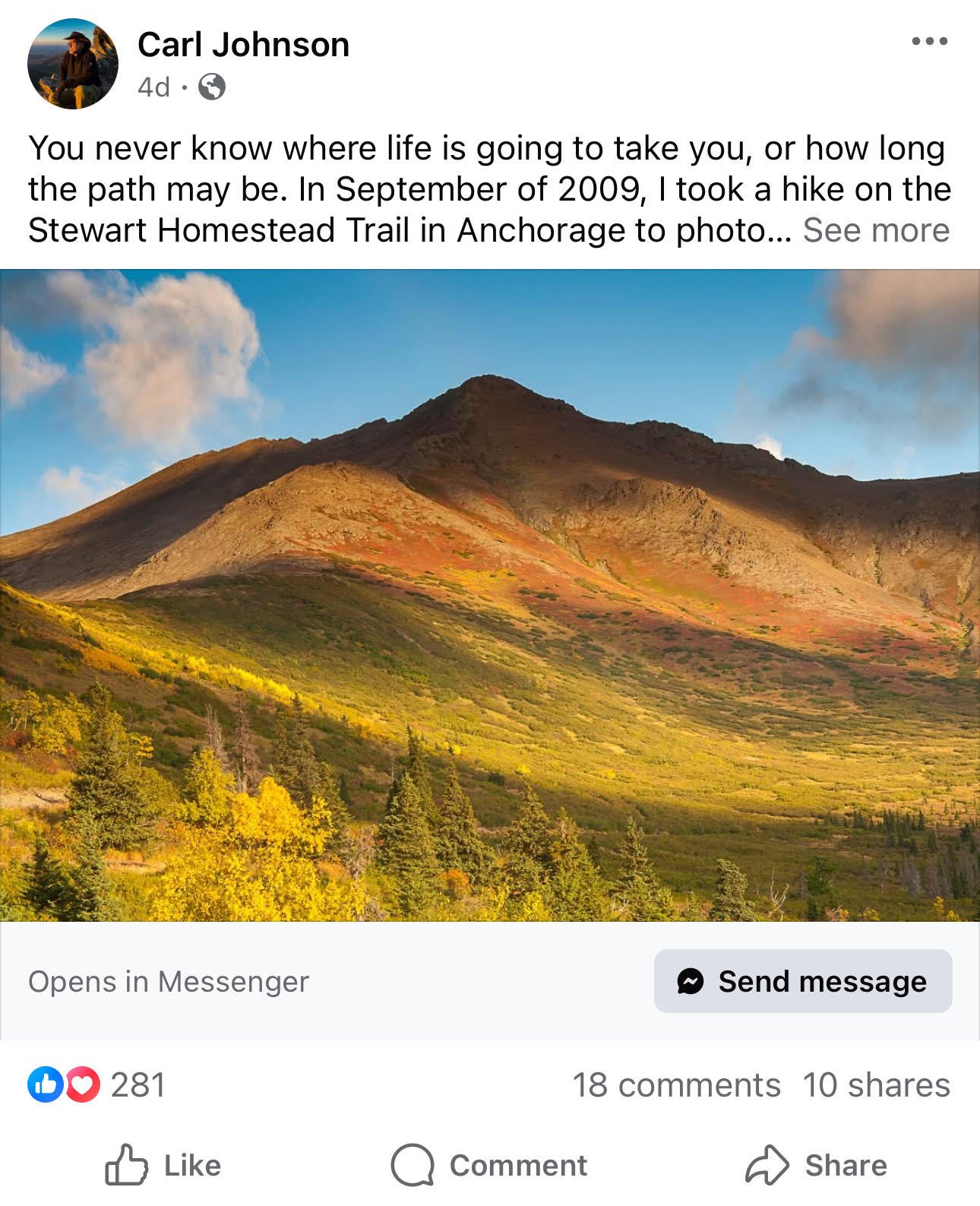
Reached by phone on August 22, Johnson explained that he had volunteered for Great Land Trust for many years. GLT’s assignments had often taken him to beautiful but little-known parts of Anchorage, he said, including the Campbell Creek Estuary, recently-dedicated Potter Marsh Watershed Park, and the Stewart Trail.
Asked about those who have attempted to block the Stewart Trail over the years, Johnson said “Well, it’s unfortunate. I try to understand my community, be a part of it and contribute positively toward it. I see those people as not considering themselves part of the community. They don’t care about the community and don’t want to contribute positively toward it. They just want to do what they want to do.”
Johnson told the Landmine that his first trip into upper Potter Valley on the Stewart Trail years ago had left a lasting impression. The sweeping tundra ridges and feeling of wildness had reminded him of Denali, he said, despite being readily accessible from urban Anchorage.
“I thought it was marvelous,” he said. “And it’s a beautiful valley, absolutely stunning.”
Stewart Trail series
This article is part of the Alaska Landmine's coverage of the Stewart Trail access controversy
Special Feature
One Man's MountainArticle
Stewart Trail blockader Frank Pugh demands arrest of Landmine team and elected officialsArticle
Judge rules that Anchorage's historic Stewart Trail is open to the publicArticle
Judge orders Frank Pugh to restore Stewart Trail public accessArticle
GLT acquires Potter Valley parcels, securing Chugach State Park public access via the embattled Stewart Trail





It’s actually incredible that someone like Brandy has the resources to purchase all this land up there. How her real estate empire has not collapsed under the weight of her own nuttiness is truly beyond me.
Private trailhead on land that is currently public. Pfft. Get lost with that.
Excellent reporting Paxson. Thank goodness for GLT. Public lands matter.
Thank you for your advocacy and reporting. I just took an amazing hour and half run up there this morning. Very thankful that hostile actors have been shut down
The Stewart Trail is truly beautiful in all seasons. I highly recommend everyone in Anchorage visit it to enjoy our public trails and lands. Please be considerate about parking though. The neighbors are not trying to shut parking down but are trying to make sure that people park in a safe and respectful way so as to not cause issues. It is a very short (1-2 minutes) walk from the streets where you can park to the trailhead.
we are not hostile. He’s lying. But articles like this make negotiation and discussion difficult at best
You are not entitled to negotiate away public access rights on a platted public easement on property you happened to purchase because you find it inconvenient… There was nothing needing to be negotiated before you tried to illegally block access. Buyer beware.
As a realtor (LOL) you should have known when you bought this property about the easement. It is part of the disclosure. I think you’re trying to pump and dump now- create a crazy scheme for a ski area (ANOTHER LOL)to get investors then sell it off because you failed to see the purchase risks.
You are not a developer. You have never developed anything, Brandy. You sell real estate. Like thousands of other salesmen and saleswomen in AK.
LOLOLOL
Your hostility to public access has now been documented thoroughly with screenshots, photos, and documents. Your childish dishonesty (“Supported by the Rabbit Creek Community Council”) has also been thoroughly documented, with actual evidence. This claim of “we are not hostile” is pure gaslighting, and it is, frankly, pitiful.
Nobody has to “negotiate” with you for access to a public trail. You have no authority over that trail, which I will continue to use and enjoy with or without your needless approval.
What Brandy is trying to do here is something called “socialize the losses, privatize the profits.” She wants to steal the public’s current unrestricted access to Potter Valley and put it into her private ownership, use public funds to develop access and infrastructure to her otherwise unproductive landholdings (ie socialize the losses), and then channel the profits from her development and for-profit trailhead to herself (ie privatize the profits). Luckily, the public holds ALL the cards here. Without public deference and public money, Brandy just becomes one more person with her name on a title to land that she can’t… Read more »
great coverage!!
This is the way!
While I understand the desire to get access, I disagree with using the power of government to step on individual property rights.
GLT did this the way it should be done. Gather the funds, purchase the property, and do with it as you please.
Leading by example!
That’s not what’s going on here. The people who used to own Brandy’s land platted a public easement across it. That’s a recorded, binding legal document guaranteeing public access. That easement existed when Brandy bought the land, and if she didn’t know about it (or doesn’t believe in easements) then all I can say is her real estate clients better be VERY careful… Even if that recorded easement didn’t exist, the Stewart Trail would still be a prescriptive easement whether Brandy likes it or not. She’s just the newest bridge troll in Upper Potter Valley, trying to con the city… Read more »
Thank you again Paxson for continuing to cover these issues.
Thanks Paxon for the well researched and written article. I checked today (8/27/25) anticipating a walk on the trail with my dog (we have over the years walked on the trial several times) I found the gate in place with a bevy of “no trespassing” signs still in place along with warnings against entering the property. Leading up to the locked gate there are also many “no parking” signs How and when are to be allowed to use the trail without threats and obstructions?
Who is allowed to drive on this trail? Did Judge Crosby make exceptions? Motorized trail starting at Steamboat gate?
Alaska has long attracted money and dreamers, and following in the wake are the grifters, the con artists, and the opportunists. Brandy’s “ski resort” isn’t just a faulty idea, it’s a con. Anyone familiar with the ski industry (or any series skiers, for that matter) could tell you that that location makes no sense whatsoever for a ski area. But Brandy’s target isn’t actually skiers, the target of her con is the municipality. She tried to trick well-meaning folks at the muni that if they give her access to large amounts of public money, she can make the city bigger,… Read more »